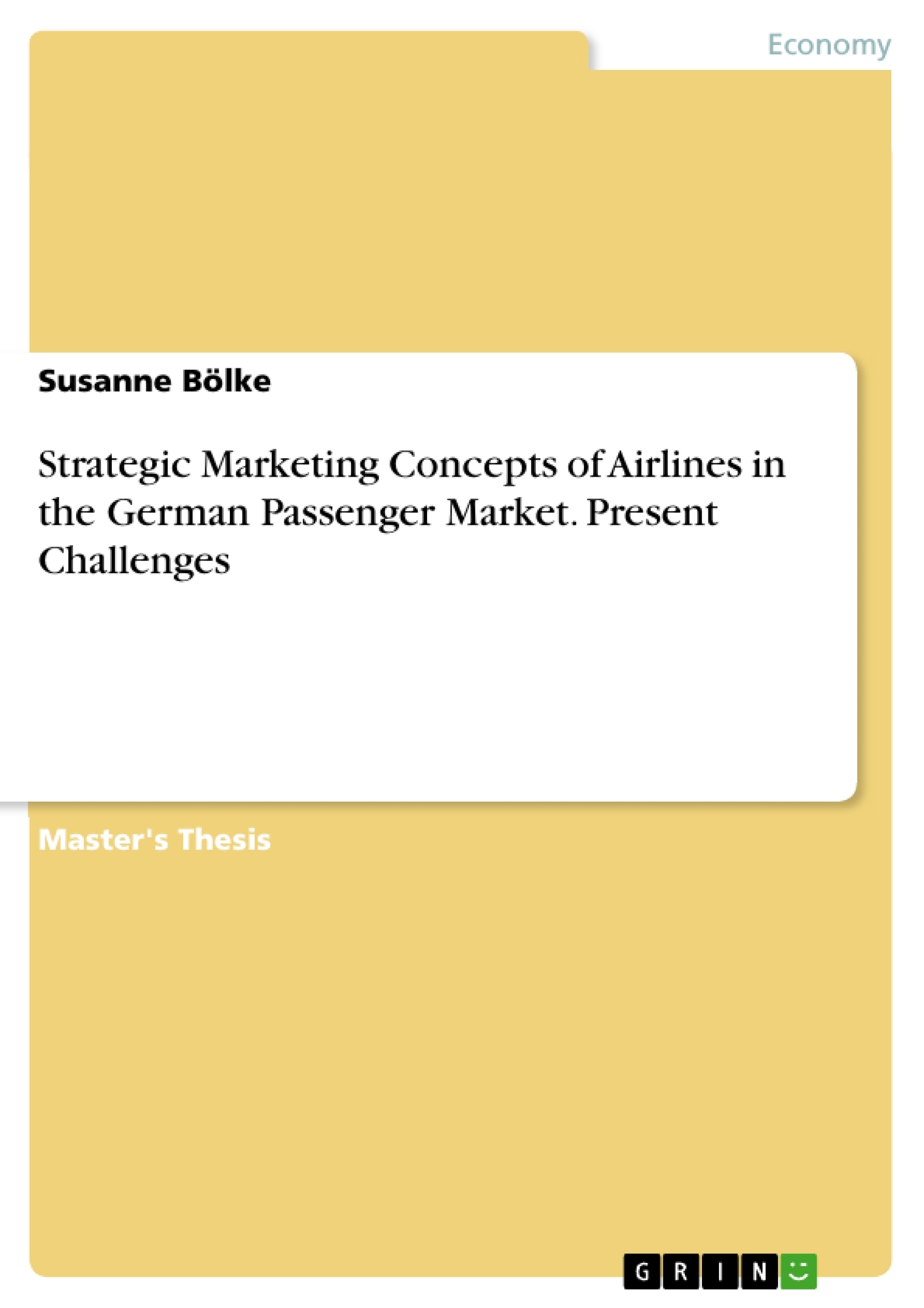On the German passenger market, airlines approach different business concepts in order to cope with the threats and to be successful. The case of the Lufthansa Passenger Airline and its subsidiary Germanwings has been discussed many times currently. Together they have implemented a restructured concept of the Low Cost Carrier Germanwings in order to overcome their weaknesses. The purpose of this paper is to evaluate the potential of economic success of this strategy change. Therefore, the paper comprises three main areas. The first one is the theoretical part, which explains the differences between Full Service Network Carriers, Low Cost Carriers, Regional Carriers and Leisure Carriers. Secondly, the analysis takes place by applying Porter’s five forces model. Subsequently, the strengths and weaknesses of the Lufthansa Passenger Airline and Germanwings are highlighted and the new business concept is introduced. Finally, all findings are put into relation using the SWOT-analysis.
Inhaltsverzeichnis (Table of Contents)
- Introduction
- Research Objectives
- Overview of the Study
- Research Methodology
- Strategic Airline Marketing
- The Classical Marketing and the Marketing Management Process
- The Marketing Mix Applied by Airlines
- Product Policy
- Price Policy
- Place Policy
- Promotion Policy
- Applied Business Concepts of Airlines
- Full Service Network Carriers
- Marketing Mix
- Advantages and Disadvantages
- Low Cost Carriers
Zielsetzung und Themenschwerpunkte (Objectives and Key Themes)
This Master's thesis aims to evaluate the economic success potential of the restructured business concept implemented by Lufthansa Passenger Airline and its subsidiary, Germanwings. This strategy involves integrating elements of Low Cost Carriers (LCCs) into the existing Full Service Network Carrier (FSNC) model.
- Analyzing the differences between FSNCs, LCCs, Regional Carriers, and Leisure Carriers within the German passenger airline market.
- Assessing the competitive landscape of the German passenger airline market using Porter's Five Forces model.
- Identifying the strengths and weaknesses of Lufthansa Passenger Airline and Germanwings.
- Evaluating the effectiveness of the new business concept using a SWOT analysis.
- Exploring the potential for success of this combined FSNC-LCC model.
Zusammenfassung der Kapitel (Chapter Summaries)
The introduction lays out the research objectives, providing an overview of the study's scope and methodology. Chapter 2 delves into the theoretical framework of strategic airline marketing, covering the classical marketing management process and the application of the marketing mix within the airline industry. The third chapter explores various applied business concepts of airlines, focusing on Full Service Network Carriers and Low Cost Carriers, analyzing their respective marketing mixes and advantages/disadvantages.
Schlüsselwörter (Keywords)
This Master's thesis focuses on strategic marketing concepts within the German passenger airline market, specifically analyzing the restructuring of the Lufthansa Passenger Airline and Germanwings. The study explores concepts like Full Service Network Carriers, Low Cost Carriers, Porter's Five Forces model, and SWOT analysis, evaluating the potential economic success of the new business model.
- Arbeit zitieren
- Susanne Bölke (Autor:in), 2013, Strategic Marketing Concepts of Airlines in the German Passenger Market. Present Challenges, München, GRIN Verlag, https://www.grin.com/document/271090



